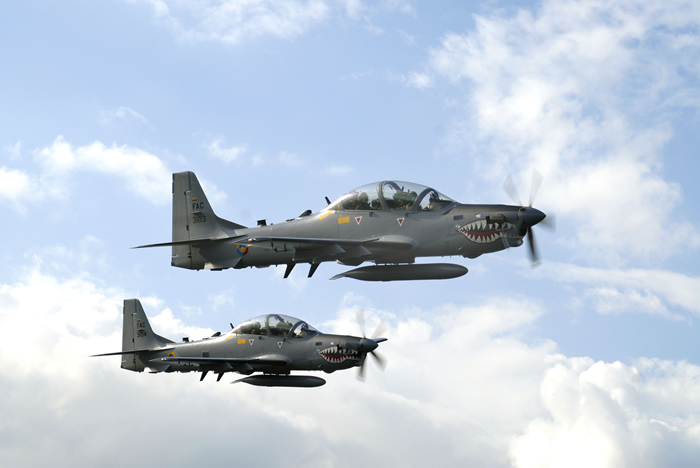The colombian state and the criminal gangs
DOI:
https://doi.org/10.18667/cienciaypoderaereo.496Keywords:
criminal gangs, drug trafficking, extortion, military forces, national policeAbstract
This article seeks to demonstrate the impact and interference generated by the Criminal Gangs (BACRIM) at national and international levels, with the aim of proposing a restructuring of the roles and functions of the Military Forces and the Colombian National Police, which will weaken and neutralize the criminal actions of this type of criminal organizations. To this end, the emergence of the BACRIM is identified after the processes of disarmament, demobilization and reinsertion of the United Self-Defense Groups of Colombia, from which they inherited their criminal actions, focusing mainly in drug trafficking, extortion and the implementation of new financing mechanisms such as the illegal extraction of mining deposits, which represents a serious problem for national and regional security. The criminal modality of these gangs has evolved to the point of being consolidated into criminal organizations with territorial control inside and outside the country. It would be appropriate to modify the military doctrine according to the actual process of transformation of the Military Forces, which would allow the preservation of the sovereignty of the national territory, making them guarantors of the country´s external security, while the National Police must increase their capacity for deployment and maneuver, focusing exclusively on internal security. The above, in order to avoid that in a post conflict scenario, the demobilized are part of the common crime and criminal gangs. It is therefore important to ensure that the Military Forces and the National Police are prepared and trained to deal with new phenomena such as the BACRIM.
Downloads
References
Acción de Reparación Directa, 25087 (Consejo de Estado - Sala de lo Contencioso Administrativo 30 de enero de 2013).
Aguilera Quintero, J. y. (2009). hoja de ruta del Ejército Nacional. Los Derechos Humanos y el Derecho Internacional Humanitoario, 197.
Centro Internacional para la Justicia Transicional. (2014) ¿Qué es la JusticiaTransicional? Recuperado el 19 de mayo del 2015 de http://ictj.org/es/que-es-la-justicia-transicional?gclid= CTY-_HP8r4CFSYV7AodO1AAdQ.
Colombia Opina. (Diciembre 11, 2014). Necesidad de aplicación de normas del DIH en lucha contra las BACRIM. [Web post]. Recuperado el 20 de mayo del 2015 de https://colombiaopina.wordpress.com/2014/12/11/necesidad-de-aplicacion-de-normas-del-dih-en-lucha-contra-las-bacrim/
Colprensa. (Mayo 03, 2013). Aún es Incierto el papel de las FFMM en el Postconflicto. El Nuevo Día. Recuperado el 29 de mayo del 2015 de http://www.elnuevodia.com.co/nuevodia/mundo/colombia/180860-aun-esiniciert o-el-papel-de-las-ffmm-en-el-postconflicto
Consejo de Seguridad Nacional. (07 de febrero de 2011). El Espectador. Obtenido de El Espectador: http://www.elespectador.com/noticias/judicial/consejo-nacional-de-seguridad-video-249439
Espinal, A., Alberto, M., & Valencia Agudelo, G. D. (2008). Balance del proceso de
Desmovilización, Desarme y Reinserción (DDR) de los bloques Cacique Nutibara y Héroes de Granada en la ciudad de Medellín. Estudios Políticos, 33, 11-34
Escobar, G. L. (2011). Legitimidad de las Fuerzas Militares como garante de los derechos humanos y el Derecho Internacional Humanitario. Estudios de Seguridad y Defensa, 18-23.
Konrad Adenauser Stiftung (17 de junio del 2013). Escenarios prospectivos de la
seguridad en Colombia frente al proceso de paz. Recuperado el 20 de mayo del 2015 de http://www.kas.de/kolumbien/es/publications/34733
Mejía, J. C. (2012). Derecho de la Guerra. Bogotá: Equion.
Presidencia de la Republica. (2011). Consejo de Seguridad Nacional.
Prieto, C. A. (2012). Bandas criminales en Colombia:¿amenaza a la seguridad
regional? Revista Opera (12), 181-204. Recuperado el 20 de mayo del 2015 de http://poseidon01.ssrn.com/delivery.php?ID=2181250680211512411409402 8083100010103082061020005063086101089127013127113100112078123118100120050104112113075094113016013096020059005039077088127106103112076084111026009024115113090005002065023081112067099029073113003124083064020072100112002017102&EXT=pdf&TYPE=2
Policia Nacional. (2010). Estrategia de la Policia Nacional para la Consolidación de la Seguridad Ciudadana. Bogotá: Imprenta Nacional.
Restrepo, Carlos. (2003). El Posconflicto en Colombia: Desafío para la Psiquiatría. Revista Colombiana de Psiquiatría , 32 (2), 130-132. Consultado el 10 de junio de 2016, los de http://www.scielo.org.co/scielo.php?script=sci_arttext&pid=S0034-74502003000200001&lng=en&tlng=es.
Rodríguez Hurtado, H. (2013). Nuevas espirales de violencia como consecuencia de fallidos procesos de desmovilización de grupos armados ilegales en Colombia. Recuperado el 20 de mayo del 2015 de http://repository.unimilita r.edu.co/bitstream/10654/9203/1/RodriguezHurtadoHenry2012.pdf
Responsabilidad en Derechos Humanos, sentencia su 1184 (corte constitucional 13 de noviembre de 2001).
Reeberg, A., Camacho, Á., Chaux, E., Garcia, A., Itturralde, M., Sanchez, F., &
Wills, L.(2003). Preparar el futuro: conflicto y post-conflicto en Colombia. Pp. 31-32.
Rico, D. M. (2013). Las dimensiones internacionales del crimen organizado en Colombia: Las Bacrim, sus rutas y refugios. La diáspora criminal: La difusión transnacional, 27. Recuperado el 20 de mayo del 2015 de http://www.freelists.org/archives/colombiamigra/09-2013/pdfyBB0QM76dQ.pdf# page=35
Sánchez. (2014). Bandas Criminales continuación de la Violencia con los mismos medios. Estudios de Seguridad y Defensa, 36-50.
Sánchez, J. E. (2011). Bnadas criminales: Continuación de la violencia con los mismos medios. Estudios de Seguridad y Defensa, 30-50.

Downloads
Published
Issue
Section
License
Assignment of Copyrights
Authors assign Ciencia y Poder Aéreo journal the exclusive rights (reproduction, distribution, public communication, and transformation) to exploit and commercialize their work, in whole or in part, in all the formats and modalities of present or future exploitation, in all languages, throughout the life of the work and throughout the world.
All contents published in Ciencia y Poder Aéreo journal are licensed under a Creative Commons Attribution 4.0 International License, whose complete information is available at http://creativecommons.org/licenses/by/4.0/
Under the terms of this license, users are free to download, print, extract, archive, distribute and publicly communicate the content of articles, provided that proper credit is granted to authors and Ciencia y Poder Aéreo, scientific journal of the Graduate School of the Colombian Air Force. Except when otherwise indicated, this site and its contents are licensed under a Creative Commons Attribution 4.0 International License.
For other uses not considered under this license it is required to contact the Director or the Editor of the journal at the e-mail address cienciaypoderaereo1@gmail.com.
The Graduate School of the Colombian Air Force and this publication are not responsible for the concepts expressed in the articles, including the metadata or the affiliation stated by authors. This is the full responsibility of the authors.





















